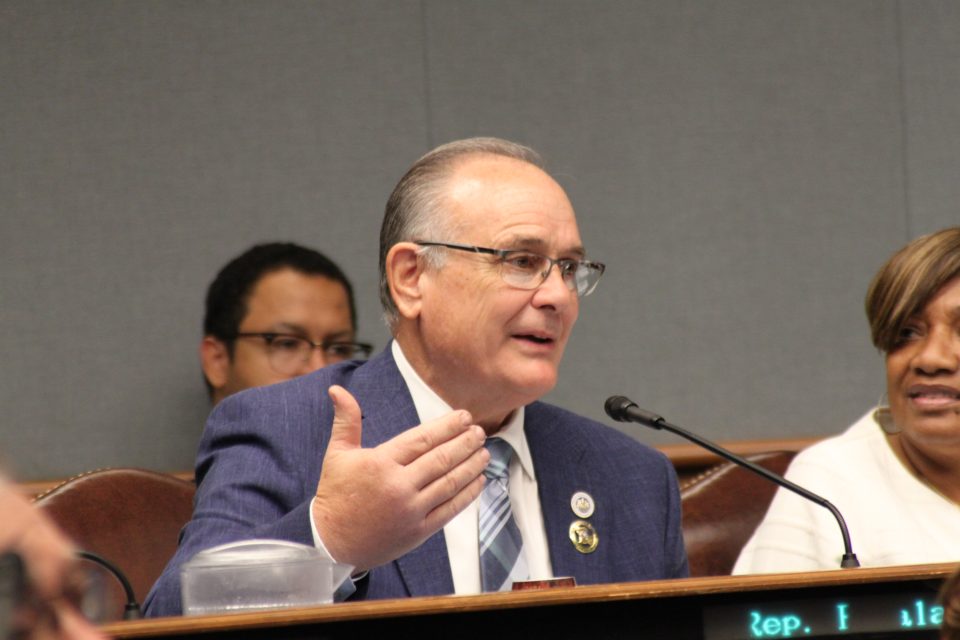CRIMES
May 13, 2015Body found in Cocodrie identified
May 15, 2015Lafourche Parish officials have completed their application to the Federal Aviation Administration for authorization to fly three drones purchased last year.
Parish administrators have already taken flight, though, operating the drones on a few occasions before the FAA authorized them to do so.
Unmanned Aircraft Systems, commonly known as drones, are small aircraft piloted remotely by a person on the ground and are commonly used in conjunction with a camera for a bird’s eye view of the ground below. The technology evolved rapidly within the last decade and is becoming more commonplace as costs go down.
Parish Administrator Archie Chaisson said the parish hasn’t received any correspondence from the FAA since late last year after receiving their log in credentials to an FAA online database for public entities to apply for authorization to operate a drone. He said they have complied with all FAA regulations that they’ve been made aware of thus far.
“As with most federal initiatives with new and developing regulations there are times when things change as programs progress,” Chaisson said. “UAV operations are the perfect example when there is a disconnect between what the federal government expects and what we as local government think we need to do.”
The Times previously reported that the Lafourche Parish administration had used the drones without FAA clearance. They were not authorized because they had not completed their online application for a Certificate of Waiver or Authorization, commonly known as a COA, which authorizes government entities to fly a drone in civil airspace.
Chaisson said that a draft application was submitted on Dec. 14, 2014.
FAA spokesman Les Dorr said last Thursday that Lafourche Parish had just submitted their completed application for a COA.
Chaisson said many questions remain left unanswered.
“They will have to wait until the COA is approved to operate in compliance with FAA regulations,” Dorr said in an email. “Our aviation safety inspection [department] will call them soon to discuss the situation.”
Chaisson said Lafourche Parish will not fly the drones “unless an emergency pops up where it’s really warranted.”
“The agency has expedited procedures to grant one-time COAs for time-sensitive emergency missions such as disaster relief and humanitarian efforts – sometimes in just a few hours,” Dorr said.
One of the drones was used to survey damage after an F1 tornado tore through Chackbay last Monday, a use parish officials said is among planned employments. Other planned uses include applications for criminal investigation and monitoring of coastal erosion, because the drones can go to places not accessible to humans.
The parish purchased three DJI Phantom 2 Vision+® quadcopters in early November. They measure approximately 16 inches across and 12 inches in height, resembling a toy helicopter.
A quadcopter is a small, unmanned aircraft with four propellers that is remote-controlled.
The Federal Aviation Administration has been rushing to establish rules governing drone flight as the technology has evolved within the last few years. The FAA just proposed a new set of guidelines for drone flight on February 15.
The FAA guidelines are extensive and include requirements that drones weight no more than 55 pounds and be flown within the operator’s line of sight. Also, the drone cannot be flown above 500 feet. They are not flown over people not involved with the operation.
COA’s are only for a specific area. Most require coordination with an appropriate air traffic control tower, require aircraft to be labeled with registration numbers, and may require the aircraft be fitted with a transponder.
Because drones don’t have a pilot, they cannot be flown out of the operator’s line of sight. To be flown further, a visual observer or chase plane must follow the drone to ensure it doesn’t collide with anything or anyone.
The COA approval process takes about 60 days, during which the “FAA conducts a comprehensive operational and technical review,” according to the FAA website.
One local academic is very familiar with the emerging technology and is even exposing students to it in college. Dr. Balaji Ramachandran, head of the Geomatics Program at Nicholls State University, said the university’s application for a COA was approved 61 days after submission.
Ramachandran said that he has two professional pilots who volunteer to operate the university’s unmanned aerial vehicles for various projects such as mapping Louisiana’s coastlines, monitoring infrastructure and studying flares on oil and gas platforms in the Gulf of Mexico.
There is no requirement to have a pilot’s license to get a COA, but the new guidelines do require operators to be tested and certified by the FAA. This includes a written test on the basics of aeronautics and safe flying.







